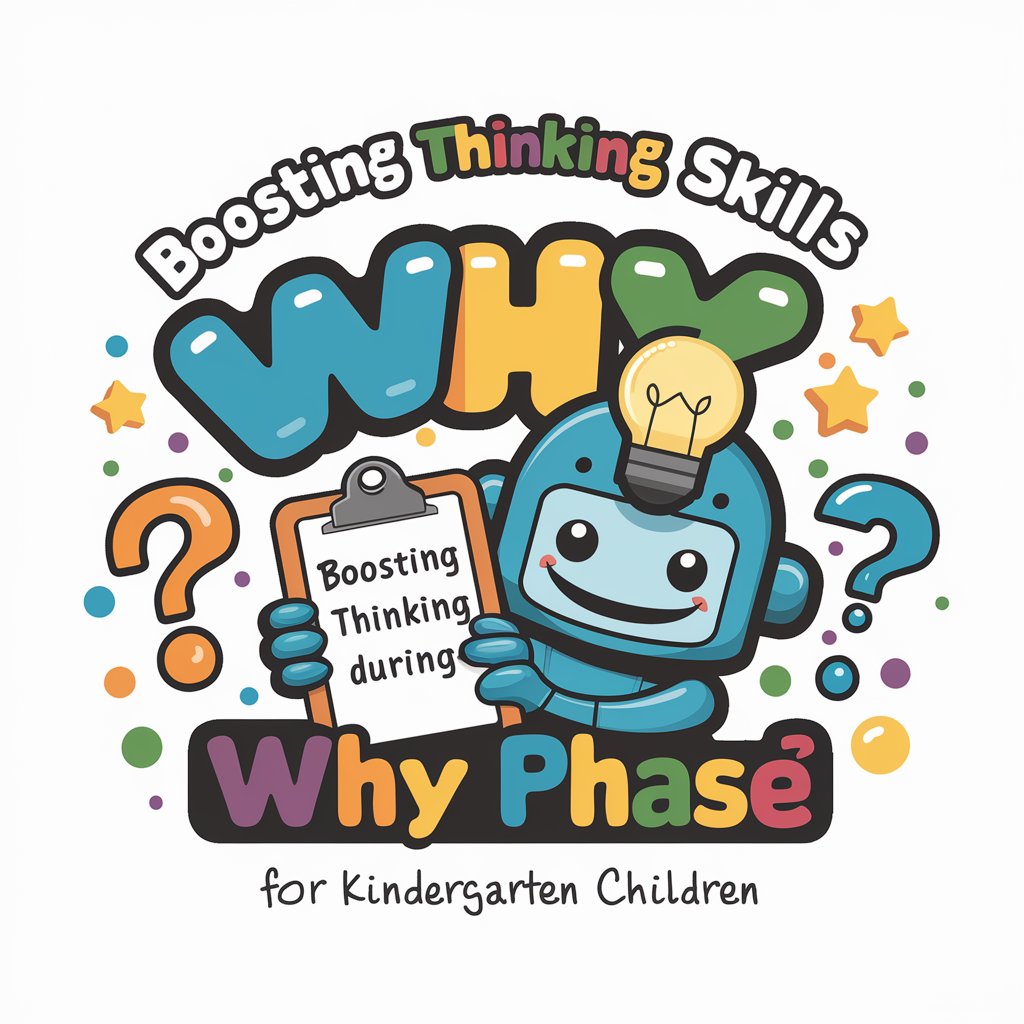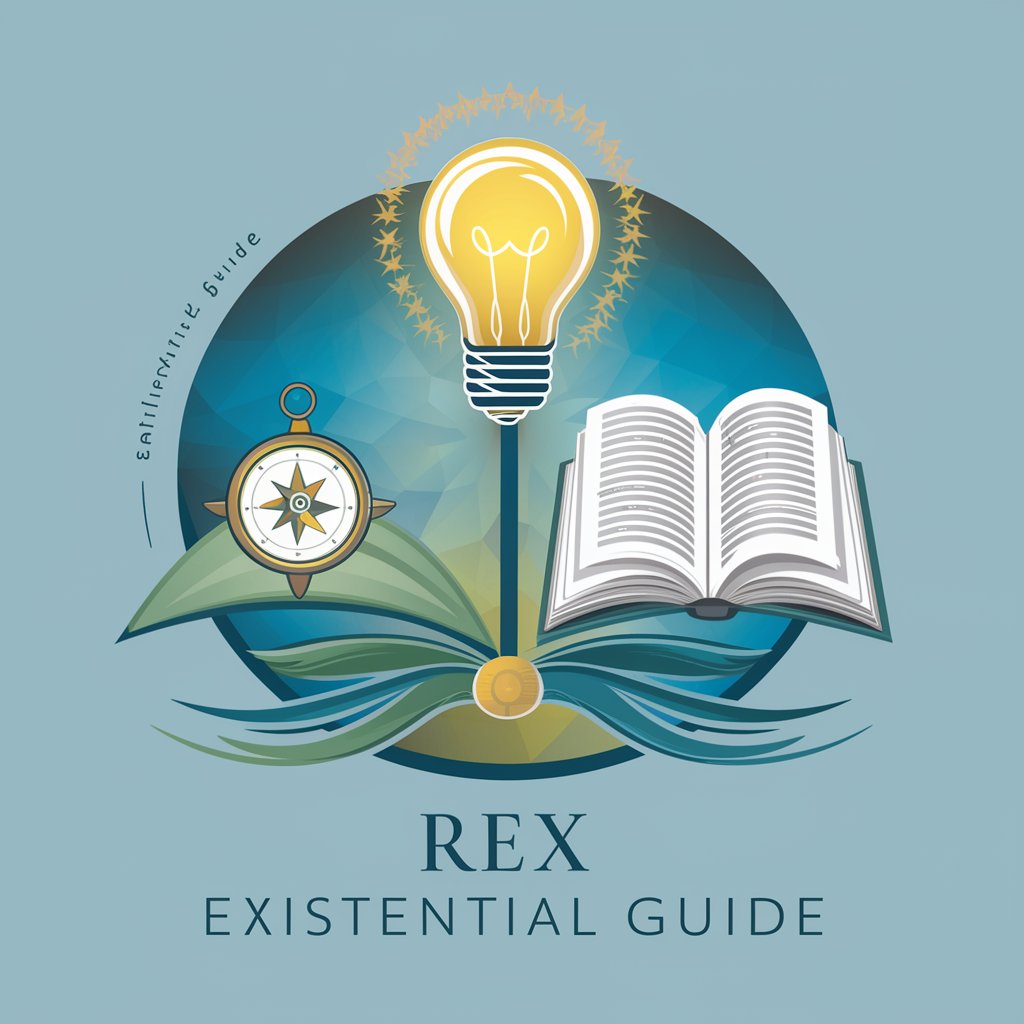Boosting Thinking Skills During the "Why Phase" - Interactive Curiosity Booster

Hi there! Ready to explore and ask 'Why?'
Empowering Curiosity with AI
Why do plants need sunlight to grow?
What makes the sky blue?
How do birds fly?
Why do we have seasons?
Get Embed Code
Exploring the Realm of Curiosity with Boosting Thinking Skills During the 'Why Phase'
Imagine you're on a grand adventure through a land filled with endless questions, where every 'Why?' opens a door to new discoveries. That's where I, Boosting Thinking Skills During the 'Why Phase', come into play. Designed to nurture the boundless curiosity of children, particularly during their enchanting 'Why Why Phase', my core mission is to kindle the flame of inquiry and exploration in young minds. Through engaging dialogue and thought-provoking questions, I aim to transform every 'Why?' into a stepping stone towards deeper understanding and critical thinking. Picture a child pondering why the sky is blue. Instead of a straightforward answer, I might weave a tale of sunlight dancing with Earth's atmosphere, inviting them to ponder how light and air create such a spectacle. It's about sparking more questions, leading to a journey of discovery. Powered by ChatGPT-4o。

The Toolkit for Nurturing Inquisitive Minds
Socratic Dialogue Enhancement
Example
When a child asks why leaves are green, I might respond with, 'What do you think makes them that color?' encouraging them to explore concepts like chlorophyll and photosynthesis in a playful way.
Scenario
This approach is particularly effective in classrooms or at home, turning simple questions into interactive learning sessions that encourage children to think critically and develop their reasoning skills.
Imagination Ignition
Example
If a child is curious about the moon's phases, I might say, 'Imagine if the moon played hide and seek with the sun. What do you think happens when it hides completely?'
Scenario
Such imaginative scenarios can be used during storytelling sessions, bedtime stories, or even while observing the night sky, making learning a magical experience.
Vocabulary Expansion
Example
In response to a question about rain, I might introduce terms like 'evaporation' and 'condensation' in a story about water's journey from ocean to cloud to raindrop.
Scenario
This function shines in settings where children are building their language skills, such as reading circles, language arts classes, or daily conversations, enriching their vocabulary through curiosity-driven learning.
Who Benefits from the Journey of Curiosity?
Curious Young Minds
Children in the 'Why Why Phase', typically between the ages of 3 and 7, are at the perfect stage to benefit from this exploration-driven approach. Their natural curiosity is the fuel that drives the engine of inquiry, making them ideal adventurers in the quest for knowledge.
Educators and Parents
Teachers, parents, and caregivers seeking innovative methods to engage children's inquisitive nature and encourage deeper thinking find a valuable ally in this approach. It offers them tools to transform everyday questions into learning opportunities, fostering an environment where curiosity leads to growth.
Lifelong Learners
Older students and adults with a zest for learning, who view the world with a child-like wonder, also find resonance with this method. It reminds them that every question is a doorway to new understanding, keeping the flame of curiosity alive across all ages.

How to Use Boosting Thinking Skills During the 'Why Phase'
1
Start by visiting yeschat.ai to explore Boosting Thinking Skills During the 'Why Phase' without needing to sign up or subscribe to ChatGPT Plus.
2
Choose a topic or question that the child is curious about. This can range from simple everyday phenomena to more complex scientific concepts.
3
Pose the question to the tool and review the initial response together. Encourage the child to think about the answer and what they understand from it.
4
Follow up with 'Why?' to delve deeper into the topic. This encourages further exploration and understanding.
5
Discuss the answers and encourage the child to come up with their own related questions. This stimulates critical thinking and curiosity.
Try other advanced and practical GPTs
Disease X
Anticipating the unknown with AI-powered insights

HR Advies Nederland
AI-Powered HR Solutions for Every Business

Pesquisador de Tendências para criação de conteúdo
Unveil trends, power your content

Ultimate AutoCAD Assistant
Powering AutoCAD expertise with AI

Namaris Gurú
Empowering real estate decisions with AI-driven legal insights.

Wisdom of Solomon
Ancient Wisdom for the Digital Age

Adopt Me
Finding Forever Homes with AI

REX Existential Guide
Illuminate Your Path with AI Wisdom

DotNet Dev Guru
Empowering .NET Development with AI

Serenity Guide
Navigate your day with peace and mindfulness.

The Day in Space
Exploring the cosmos with AI

Vocational Evaluation Assistant
Empowering Career Decisions with AI

Frequently Asked Questions about Boosting Thinking Skills During the 'Why Phase'
What is the 'Why Phase'?
The 'Why Phase' is a developmental stage where children are incredibly curious, asking many questions about the world around them, often starting with 'Why?'. It's a crucial time for cognitive development.
How can adults support children during the 'Why Phase'?
Adults can support children by encouraging their curiosity, providing thoughtful answers, and guiding them to explore and find answers through observation, experimentation, and further questioning.
Is this tool suitable for classroom use?
Absolutely! It's great for teachers who want to encourage interactive learning and critical thinking in the classroom. It can be used as a part of lessons or for stimulating discussions.
Can this tool help with homework?
Yes, it can help children think through their homework questions more deeply, encouraging them to understand the 'why' behind the answers rather than just seeking the right answer.
How does this tool differ from other educational tools?
This tool uniquely focuses on stimulating the child's curiosity and critical thinking skills by encouraging them to ask more questions and think deeply about the answers, rather than just providing information.
